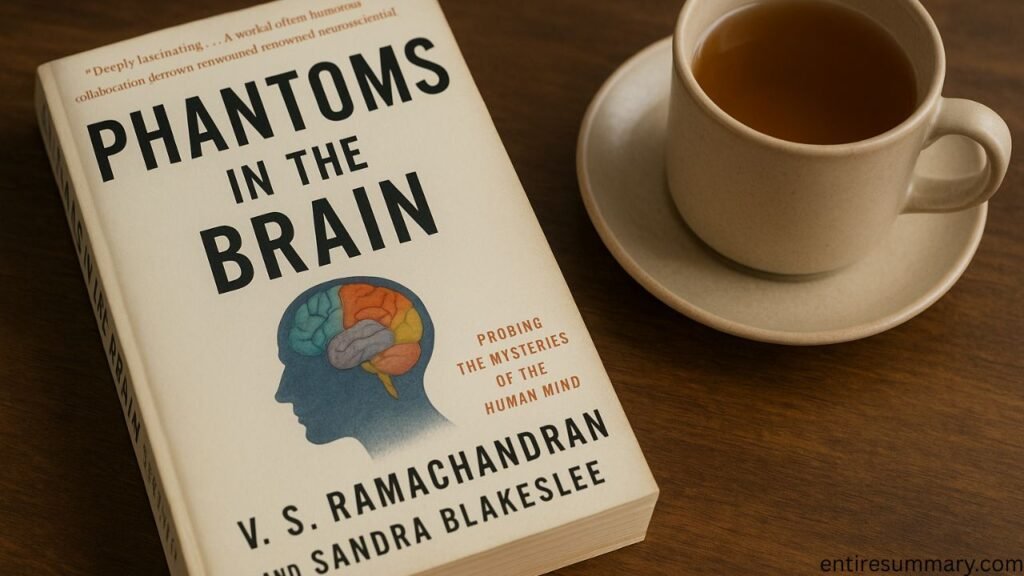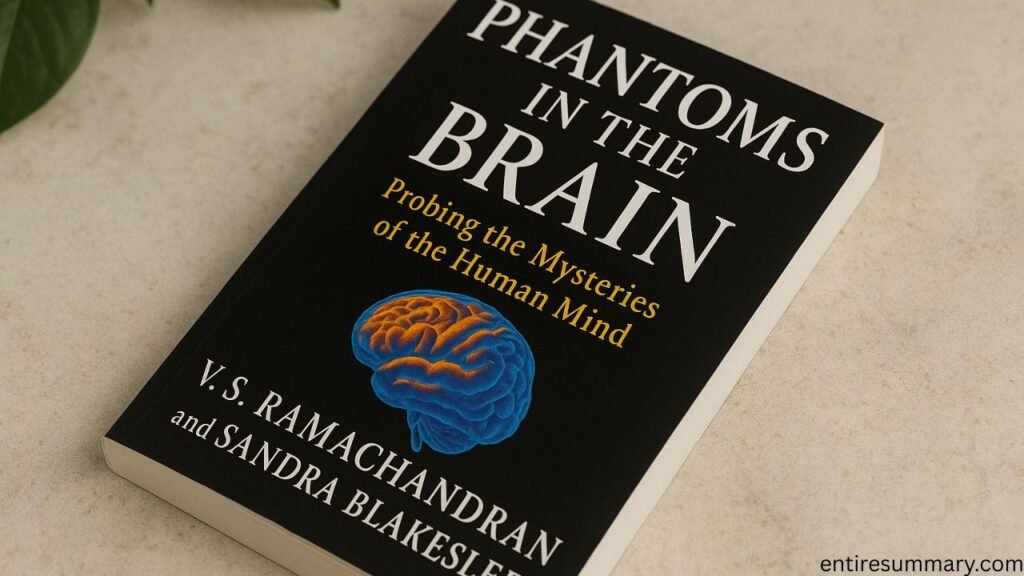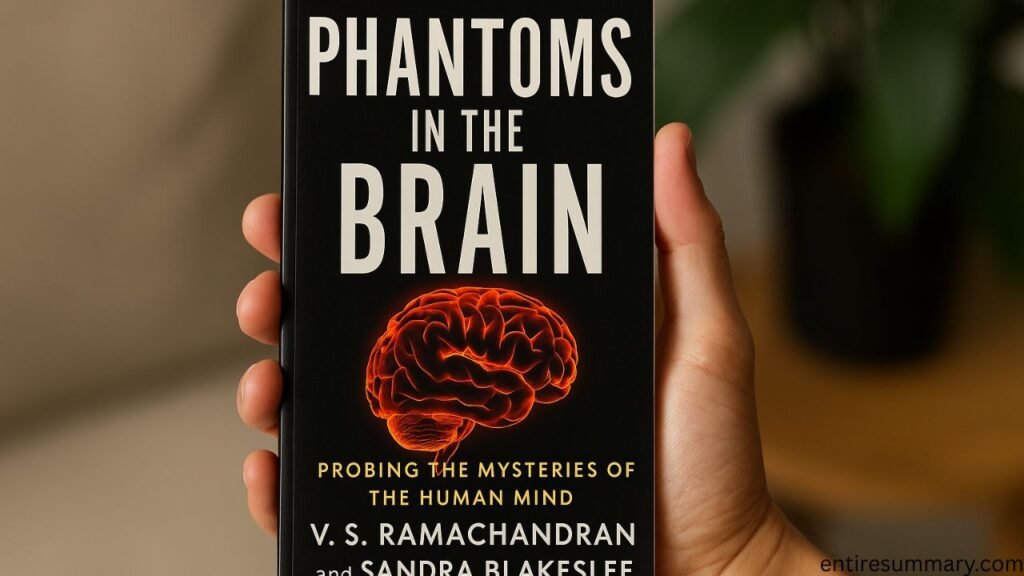“Phantoms in the Brain: Probing the Mysteries of the Human Mind,” Dr. V. S. The famous neuroscientist Ramachandran guides us on an exciting exploration of neurology. This groundbreaking non-fiction book serves as both a casebook and a philosophical inquiry, exploring bizarre and seemingly inexplicable neurological conditions. It’s a work that challenges our understanding of what it means to be human, revealing how our brains construct our reality and sense of self. Dr. Ramachandran’s accessible and engaging style makes this a must-read for anyone curious about the deepest workings of the mind.
The first half of Phantoms in the Brain introduces us to a series of extraordinary patients and their equally extraordinary conditions. One of the first topics Ramachandran explores is the famous “phantom limb” phenomenon. He describes how patients who have had a limb amputated can still feel its presence, experiencing sensations, pain, and even movements in a limb that no longer exists. Through his clever and simple experiments, he shows us how this is a direct result of the brain’s “wiring.” When the part of the brain responsible for processing sensation from the missing limb is no longer receiving input, other nearby areas can “invade” this territory, leading to the bizarre feeling of a phantom.
He discusses how this understanding led to the development of the “mirror box,” a simple yet brilliant device that uses visual feedback to trick the brain into alleviating phantom pain. By placing their intact hand in the box and looking at its reflection, patients can “see” their phantom hand, allowing them to perform actions like unclenching a fist and, which helps alleviate the severe phantom pain.
Also read: /the-tell-tale-brain/
Ramachandran then delves into other equally fascinating cases. We meet a man with Capgras delusion, who believes his parents have been replaced by impostors, and a woman with anosognosia, who, despite being paralyzed, denies her condition and insists she can move her limbs. These cases are not just medical curiosities; they are profound windows into how the brain constructs a coherent sense of reality.
The book explains how a disconnection between the part of the brain that recognizes faces and the part that processes emotional responses can lead to Capgras. Similarly, it suggests that anosognosia might be the brain’s way of maintaining a consistent self-image, even in the face of contradictory evidence. These stories challenge our assumption that our perceptions are a direct reflection of the external world.
Instead, they show us that our reality is a carefully curated and often fragile construct, built from a complex interplay of sensory input and internal cognitive models. The book masterfully illustrates how a simple lesion or a minor misfiring in a specific part of the brain can lead to a complete breakdown of what we consider normal.

The second half of “Phantoms in the Brain”
The second half of “Phantoms in the Brain” expands on these initial cases to explore broader philosophical questions about consciousness, art, and the very nature of self. Dr. Ramachandran delves into the mystery of synesthesia, a condition where a person might “see” sounds as colors or “taste” shapes. He posits that this might not be an error in the brain, but rather a remnant of a primitive, more interconnected brain, offering a fascinating perspective on the evolution of consciousness.
His work on synesthesia suggests that the boundaries we perceive between our senses are not as rigid as we think and that there might be a neurological basis for phenomena like metaphor and artistic expression. He also explores the bizarre case of a man with a temporal lobe disorder who developed an intense spiritual fervor, suggesting a neurological link between certain brain functions and religious or mystical experiences.
The book’s climax, if it can be called that in a non-fiction work, is its exploration of what all these cases tell us about the human mind as a whole. Ramachandran ties together his observations to propose that the brain uses a kind of “body image,” or schema, that it constantly updates. This schema is not just a map of our physical body but is a fundamental part of our sense of self. He argues that our consciousness is not a single, unified thing, but rather an emergent property of many different, often competing, brain modules.
The cases he presents, from phantom limbs to anosognosia, are not just about specific disorders; they are demonstrations of how this internal model can be disrupted, leading to a breakdown in what we perceive as reality. He also tackles the profound question of self-awareness and consciousness, suggesting that understanding these bizarre conditions might be the key to unlocking the greatest mystery of the human mind. The book concludes with a hopeful and thought-provoking message: by studying the outliers, the rare cases, and the “phantoms,” we can learn more about the everyday workings of the brain and, by extension, about ourselves.
Key Takeaways
Our perception of the world and our bodies isn’t a direct reflection of reality; instead, it’s a complex and delicate creation of our brains.
The Brain is Malleable: Ramachandran’s work on phantom limbs and mirror therapy highlights the incredible plasticity of the brain, showing its ability to rewire itself and adapt to new circumstances.
Mind and Body are Inseparable: Through cases of neurological disorders, the book makes a strong case that our sense of self, our emotional responses, and even our spiritual feelings are intimately tied to the physical structures and functions of our brains.
Bizarre Cases Illuminate the Norm: By studying patients with seemingly strange conditions, we gain profound insights into the fundamental principles that govern the healthy, everyday functioning of the brain.
Science and Philosophy Intersect: Phantoms in the Brain seamlessly blends scientific observation with deep philosophical questions, showing that understanding the brain is a key to understanding what it means to be conscious and human.

FAQs About Phantoms in the Brain
What is a phantom limb, and how is it different from a psychosomatic illness?
A phantom limb is the feeling of a limb that is no longer there. It is not psychosomatic; it is a neurological phenomenon where the brain’s map of the body is still active even after the limb is gone.
How does the mirror box work to treat phantom limb pain?
The mirror box uses a mirror to create the illusion of the missing limb. By looking at the reflection of their intact limb, the patient’s brain receives visual feedback that it can “see” the phantom limb, which can help alleviate pain by allowing the brain to “unclench” a phantom fist, for example.
What is anosognosia, and what does it tell us about the brain’s self-image?
In anosognosia, a person with a disability, such as paralysis, is not aware of their own condition. It suggests that the brain has a built-in “self-image” or model of the body, and in these cases, this model is not being updated correctly with new sensory information.
How can I apply the concept of “brain plasticity” from the book to my own life?
The book shows that our brains are not static. You can apply this by understanding that learning new skills, overcoming habits, or changing your perspective is neurologically possible because the brain can and does rewire itself throughout life.
Does the book offer any practical advice for dealing with common mental health issues like anxiety or depression?
While not a self-help book, “Phantoms in the Brain” provides a powerful framework for understanding that our thoughts and feelings are physical processes in the brain. This perspective can be empowering, showing that our minds are not mysterious entities but systems that can be understood and, to some extent, influenced.
Does Dr. Ramachandran believe that consciousness can be fully explained by neuroscience?
Dr. Ramachandran, a neurologist, aims to comprehend the brain’s physical basis for consciousness. While he makes significant progress, he acknowledges the complexity of the topic. He suggests that by studying the physical manifestations of the mind, we can get closer to understanding the great mysteries of consciousness.
What’s a key takeaway for someone not in the field of neuroscience?
The most important message is that what we consider “normal” is only one possibility. The bizarre neurological conditions presented in the book offer a profound look at how our brains construct our reality and sense of self, revealing the intricate and sometimes fragile nature of our minds.
Final Thoughts
“Phantoms in the Brain” is a remarkable work that’s both intellectually precise and profoundly personal. It’s a journey into the strange, the bizarre, and the profound, and it will change the way you think about your own mind. I’d give it a 10/10 for its clarity, its groundbreaking insights, and its ability to make complex science feel like a thrilling mystery. If you liked “Phantoms in the Brain,” another excellent book to explore is “The Man Who Mistook His Wife for a Hat.”


